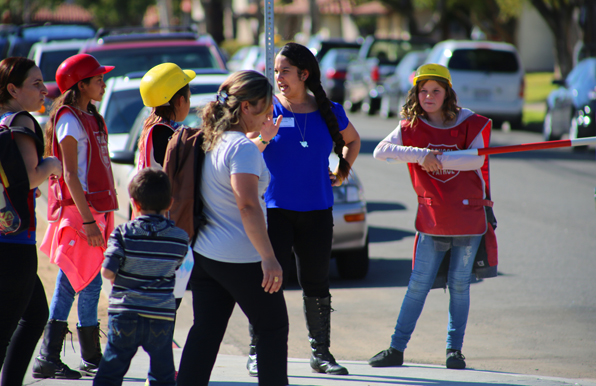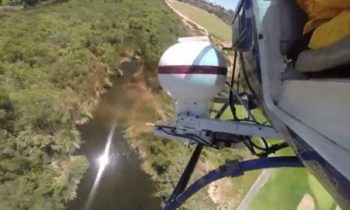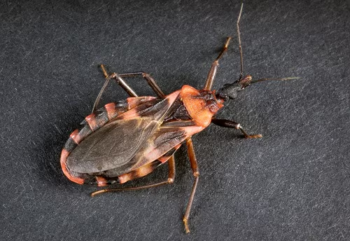Trying to create positive change in your community can seem like a daunting task. But banding together with other like-minded residents can be just the ticket to getting your improvement project accomplished and making a difference in your neighborhood.
That’s the idea behind the County of San Diego Health and Human Services Agency’s Residential Leadership Academy (RLA). The academies are a leadership training opportunity designed to empower residents to take a leadership role in improving their communities. Residents participate in 10 sessions covering community leadership and advocacy, crime prevention and safety, and healthy food systems and food access. The residents identify a project they’d like to focus on, then get guidance from a facilitator on how they interact with government agencies to reach their goal.
The academies are part of the County’s Live Well San Diego initiative and a partnership with Community Health Improvement Partners with funding from the Center for Disease Control and Prevention (CDC).
For Iliya Uribe and Rosemary Ramirez, the RLA was the perfect vehicle to improve the safety of students and pedestrians around Lexington Elementary School in El Cajon. Rocio Urrutia found her involvement was the missing ingredient in a teaching fellow Latinos in the South Bay how to make healthy choices when cooking. Herminia Ledesma became a community leader working for long-term change in the Fallbrook area.
Here are the stories of these community leaders and their journeys to making their communities better places to live and raise families:
Iliya Uribe and Rosemary Ramirez, El Cajon
It was announcement time at the Rotary Club meeting and the County’s Janet Castanos was there to talk about improvement projects and to see if she could rustle up some people interested in getting involved.
“That’s where I met Miss Janet and she was mentioning improvement projects and asking if anyone wanted to take part or had any ideas,” said Uribe. “My first thought was maybe to get a crosswalk in front of Lexington Elementary.”
Uribe was working at the school as a parking lot attendant and saw first-hand how vehicles would speed by without regards to the children and families present. The crosswalk was painted across only one of the four crossings.
“I was out here every day with the students going to the crosswalk and I was seeing so much scary stuff when parents would drop off kids before school or cars would just be going so fast on First Street,” she said. “I didn’t want to think this, but I thought it might take an accident or someone to get hurt before someone hears us or listens to us.”
It was a project that would take about two years to come to fruition, but Uribe and Ramirez didn’t give up.
“This was the project they wanted to do,” said Castanos. “Some people in the RLA class said that project was too big and that here was no way they were going to get funding.
“But they were insistent that they were going to try and weren’t going to give up.”
Castanos said Uribe, Ramirez and others who were involved at various points in the project went to visit with people at city hall. They were told no at first, because they weren’t asking for your ordinary crosswalk. They wanted one with curb extensions to help slow traffic and plenty of room for bike paths.
The women went out and did surveys and collected data on accidents.
“When it comes to something as important as people’s safety – especially children – why listen to no?” said Uribe. “We need to get surveys and we need to talk to parents.
“We asked questions about how they felt about their children walking to school or riding bikes to school and many people simply said they didn’t want their children doing that.”
Uribe and Ramirez met with the city traffic engineer five to six times and presented in front of the mayor. Their project finally got the green light.
“Just being a part of the group taught me so much – just on process of everything and maybe being turned down by the city on presenting something at first,” said Uribe. “I would do it again in a heartbeat at another school or anywhere else in my community.
“To be community-oriented, to be with my community and be able to help and serve, it’s something that I enjoy doing and that I’d love to teach my own children to do. To support one another and look out for what we can help fix or make better.”
Rocio Urrutia, National City
Urrutia took the Cooking for Salud! program at the Olivewood Gardens & Learning Center, designed to help families take control of their health through the foods they make at home. Graduates are called Kitchenistas.
“I was very interested in learning how I can get involved with my community so I signed up for the classes at the garden and participated,” Urrutia said. “After graduating, I received an invitation to come a trainer for the RLAs.”
She loved the information she was absorbing and was looking for a way to teach that knowledge to others in her community. Urritia said many cooks were simply making foods that were typical of the cooking that was passed on to them from their grandmothers.
“Now with the way of life that everyone is in such a rush, they don’t have time to cook, so it’s important that they cook healthy and improve the health of their family,” she said. “They need to use healthier ingredients that help with a healthier lifestyle.”
Through her work with the RLA, Urrutia has become a big proponent of community gardening and promoting them as a resource for urban families.
“I’m going back to the garden!” she said. “Olivewood Gardens gave me the opportunity to be in the garden and use the space so I’m going to back to see if we can work together and give back to the community.”
Herminia Ledesma, Fallbrook
Ledesma was already involved in her community, and becoming a facilitator of a RLA in Fallbrook allowed her to be in a position of leadership in the fight for better health for everyone .
“In Fallbrook we have a group of promatoras – or community leaders – that had already been involved in various efforts,” Ledesma said. “They wanted to use the learning academies support and knowledge to make improvements.”
They liked the peer approach the RLA offered and the ability to come together for a common goal. The group is also intergenerational with adults and teens working together.
One of their initial projects was developing a resource fair at a community park that also included a clean-up component allowing residents to observe their environment and clean up the city at the same time. Everyone would meet back at the park for a health resource fair at the completion of the clean-up.
They then set their sights on revamping a community garden.
“The project we are most excited about is the community garden,” said Ledesma. “We want to expand it and add a health education component.
“We also want to make it more accessible and more user-friendly. Fallbrook doesn’t have a lot of space for community gatherings and we really want to use the garden as a space to bring people together.”
Ledesma says the most important things he learned from being involved with an RLA is that everyone can come together and make a real difference in your community.
“When people think of changes in a community, they often think of political changes and really big things, but RLAs show things like advocating for spaces or bringing up ideas for programs is a great way to make change,” she said.
“The RLA is really reflective of community members changing their own community.”
For information about the Resident Leadership Academy, contact Yeni Linqui Palomino at ypalomino@sdchip.org.





